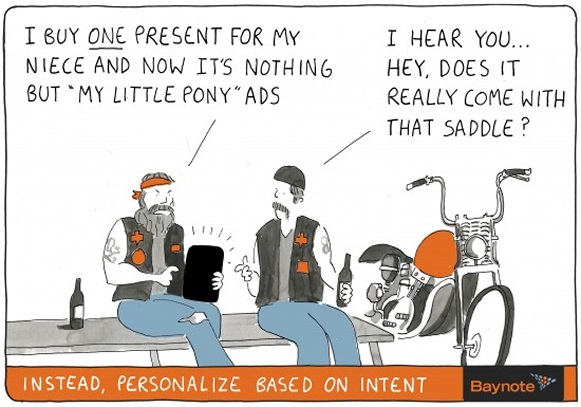The evolution of media has allowed readers to go from flipping through newspapers in order to find the latest Sudoku puzzle to buying a Sudoku booklet in stores — and even playing the game online.
This means that
people no longer have to buy the entire newspaper in order to get what they want — be it the job section, puzzles or comics.
And with more readers having been gifted with ‘choice’, they choose what news they want to consume, when they want to consume it and which medium they want to engage with.
This raises quite a bit of concern for news publishers, who are scrambling to push out content that still maintains the publication’s overall aesthetic while still keeping their audiences’ interests in mind.
So where to from here?
Personalisation trumps quality news
The thing about personalisation is … it works (
most of the time)! Algorithms and analytics tell news publishers if what they’re doing is correct due to the information that they gather about their audience, but is it at the expense of quality news? Do people even want their news to be personalised?
 Image courtesy of Marketoonist
Image courtesy of Marketoonist
According to Nick Rockwell, the CTO of
The New York Times, “
Readers have mixed feelings about personalisation in news. They want two different things — the world rendered with judgement and authority, but also a review that reflects their interests. It sounds simple, but it is tricky to get the balance right.”
So why are news publishers so set on personalisation?
It’s simple. They see an increase in the amount of growth in readership with minimal consumer backlash. This is because people wouldn’t complain about receiving news that they actually want to consume.
But are readers even aware that they’re receiving personalised content? In some cases, they are. But it all depends on whether the news publisher is personalising news in a passive or active manner.
Passive versus active personalisation
Passive personalisation is when publishers gather information about their audience, like location, gender, age, personal interests and previously consumed content, in order to get an idea of what type of content to create for their audience.
 Image courtesy of MEME
Image courtesy of MEME
This also includes a form of A/B testing, where the publisher will test out different images and headlines in order to see which ones their readers like best.
“
Testing different headlines or images for the same article offers an increased level of granularity. By analysing how different audiences consume content, publishers can make editorial decisions that are supported by the data,” says Ohad Flinker in an article for dynamic yield.
Active personalisation is when the reader intentionally selects the news they want to consume. For example, when a user signs into
Medium, they have to select the topics that interest them most. The site then only serves them content about the topics they have chosen.
 Image courtesy of Medium
Image courtesy of Medium
Finding the balance
The purpose of personalisation is to indulge the reader’s curiosity, answer a question they may have and to build a relationship with them.
However, many brands struggle to find a balance between creating content that their readers want to consume and creating news that benefits the company. The key is to find a fair balance between the two and to find what works best for
your brand.
You will never reach everyone – the key is to reach the readers who want to consume your content.
It’s all about building a
good relationship with readers, and that’s all people, and publishers, want. Loyalty. So establish what your priorities are and focus on them.
Take it from
IT News Africa: “
You can’t expect just personalisation to hold customer attention, there will always be a competitor that takes your idea and adapts it or improves it. You have to
add layers to the experience that include customer service, business understanding and expertise.”
 Image courtesy of QuickMeme
What do you think? Should more publishers be personalising their content to their readers? Let us know in the comments section below.
Image courtesy of QuickMeme
What do you think? Should more publishers be personalising their content to their readers? Let us know in the comments section below.
Want to know how to keep readers coming back for more? Take a look at these Five content consumption trends in 2020 that you need to look out for.
*Image courtesy of Vecteezy